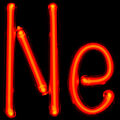Template:Selected anniversaries/December 3: Difference between revisions
No edit summary |
No edit summary |
||
| Line 3: | Line 3: | ||
File:John Wallis by Sir Godfrey Kneller.jpg|link=John Wallis (nonfiction)|1616: Mathematician and cryptographer [[John Wallis (nonfiction)|John Wallis]] born. He will serve as chief cryptographer for Parliament and, later, the royal court. | File:John Wallis by Sir Godfrey Kneller.jpg|link=John Wallis (nonfiction)|1616: Mathematician and cryptographer [[John Wallis (nonfiction)|John Wallis]] born. He will serve as chief cryptographer for Parliament and, later, the royal court. | ||
||1838: Cleveland Abbe born ... meteorologist and academic. Pic. | ||1838: Cleveland Abbe born ... meteorologist and academic. Pic. | ||
| Line 11: | Line 9: | ||
||1854: Battle of the Eureka Stockade: More than 20 gold miners at Ballarat, Victoria, are killed by state troopers in an uprising over mining licences. | ||1854: Battle of the Eureka Stockade: More than 20 gold miners at Ballarat, Victoria, are killed by state troopers in an uprising over mining licences. | ||
||1879: Donald Matheson Sutherland born ... physician and politician, 5th Canadian Minister of National Defence. Pic. | ||1879: Donald Matheson Sutherland born ... physician and politician, 5th Canadian Minister of National Defence. Pic. | ||
| Line 29: | Line 25: | ||
||1904: The Jovian moon Himalia is discovered by Charles Dillon Perrine at California's Lick Observatory. Pic. | ||1904: The Jovian moon Himalia is discovered by Charles Dillon Perrine at California's Lick Observatory. Pic. | ||
File:Neon_lighting_Ne_symbol.jpg|link=Neon lighting (nonfiction)|1910: First public demonstration of modern [[Neon lighting (nonfiction)|neon lighting]], by Georges Claude at the Paris Motor Show. | File:Neon_lighting_Ne_symbol.jpg|link=Neon lighting (nonfiction)|1910: First public demonstration of modern [[Neon lighting (nonfiction)|neon lighting]], by Georges Claude at the Paris Motor Show. | ||
File:John Backus.jpg|link=John Backus (nonfiction)|1924: Mathematician and computer scientist [[John Backus (nonfiction)|John Backus]] born. He will invent the Backus–Naur form (BNF) notation to define formal language syntax. | File:John Backus.jpg|link=John Backus (nonfiction)|1924: Mathematician and computer scientist [[John Backus (nonfiction)|John Backus]] born. He will invent the Backus–Naur form (BNF) notation to define formal language syntax. | ||
| Line 75: | Line 67: | ||
||2014: The Japanese space agency, JAXA, launches the space explorer Hayabusa 2 from the Tanegashima Space Center on a six-year round trip mission to an asteroid to collect rock samples ... an asteroid sample-return mission operated by the Japanese space agency, JAXA. It follows on from Hayabusa and addresses weak points identified in that mission. Hayabusa2 was launched on 3 December 2014 and arrived at near-Earth asteroid 162173 Ryugu in June 2018. It is intended to survey the asteroid for a year and a half, depart in December 2019, and return to Earth in December 2020. Hayabusa2 arrived at the target asteroid 162173 Ryugu (formerly designated 1999 JU3) on 27 June 2018. https://en.wikipedia.org/wiki/Hayabusa2 | ||2014: The Japanese space agency, JAXA, launches the space explorer Hayabusa 2 from the Tanegashima Space Center on a six-year round trip mission to an asteroid to collect rock samples ... an asteroid sample-return mission operated by the Japanese space agency, JAXA. It follows on from Hayabusa and addresses weak points identified in that mission. Hayabusa2 was launched on 3 December 2014 and arrived at near-Earth asteroid 162173 Ryugu in June 2018. It is intended to survey the asteroid for a year and a half, depart in December 2019, and return to Earth in December 2020. Hayabusa2 arrived at the target asteroid 162173 Ryugu (formerly designated 1999 JU3) on 27 June 2018. https://en.wikipedia.org/wiki/Hayabusa2 | ||
</gallery> | </gallery> | ||
Revision as of 17:58, 7 February 2022
1616: Mathematician and cryptographer John Wallis born. He will serve as chief cryptographer for Parliament and, later, the royal court.
1910: First public demonstration of modern neon lighting, by Georges Claude at the Paris Motor Show.
1924: Mathematician and computer scientist John Backus born. He will invent the Backus–Naur form (BNF) notation to define formal language syntax.
1965: Mathematician and crime-fighter Edward Lorenz publishes new class of Gnomon algorithm functions which compute and prevent crimes against mathematical constants.
2001: The Genesis spacecraft exposes its collector arrays, beginning collection of solar wind particles. The collection process will end after 850 days, on April 1, 2004, with the spacecraft completing five halo loops around L1.




